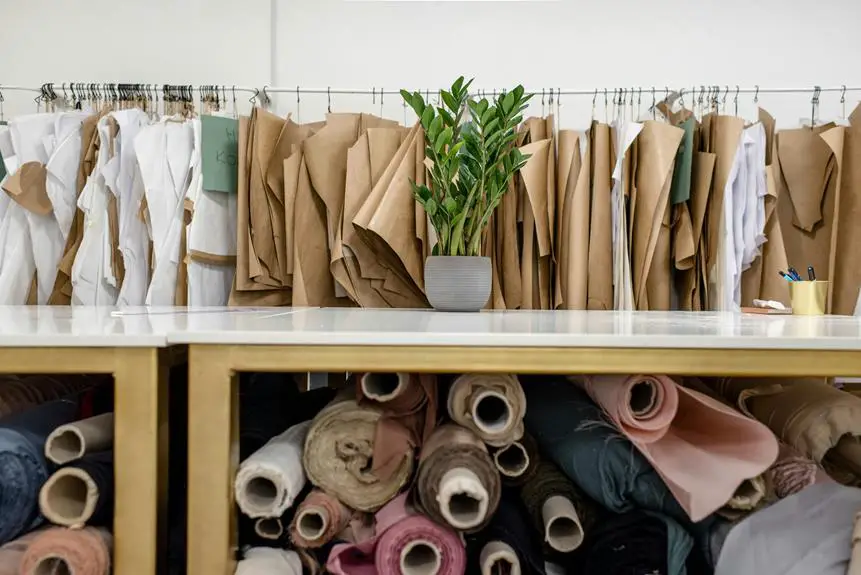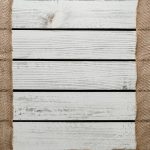When you consider the evolution of fashion, cambric fabric often emerges as a subtle yet significant player, especially during the Victorian era. Its delicate texture and lightweight nature made it a favorite for both women's elegant dresses and children's clothing, reflecting societal values of the time. You might wonder how this seemingly simple fabric contributed to the intricate lace-making traditions and the broader narrative of social norms. The story of cambric is more than just about clothing; it's intertwined with cultural shifts. What other layers does this fabric reveal about the past?
Table of Contents
Origins of Cambric Fabric
Cambric fabric originated in the medieval city of Cambrai, France, where skilled artisans wove it from fine linen. This lightweight, finely woven fabric quickly gained popularity for its smooth texture and versatility. You might find it used in various garments, from shirts to delicate undergarments, prized for its breathability and comfort.
As trade routes expanded, cambric made its way across Europe, influencing fashion in countries like England and Italy. By the 16th and 17th centuries, you'd see it becoming a staple in both casual and formal attire. Its ability to hold dyes well allowed for vibrant colors and intricate patterns, making it appealing to both the elite and the everyday person.
In addition to its aesthetic qualities, cambric's durability meant it could withstand regular wear, a significant advantage for those who valued both style and practicality.
As you explore historical fashion, consider how cambric's origins laid the groundwork for its enduring presence in textiles. Its journey from a small French town to the broader fashion world illustrates not just the fabric's versatility, but also the interconnectedness of culture and commerce throughout history.
Cambric in Lace-Making
As cambric's popularity surged across Europe, it became a favored base for lace-making, allowing artisans to showcase intricate designs that enhanced garments and home decor alike.
You'll find that cambric's lightweight and smooth texture made it an ideal canvas for delicate lace applications. Artisans often paired fine threads with cambric, creating stunning contrasts that drew the eye and added elegance to everyday items.
When you explore lace-making techniques on cambric, you'll notice how the fabric's durability supports intricate patterns without compromising its structure. Techniques like embroidery, cutwork, and needle lace flourished, leading to unique designs that reflected both regional styles and personal creativity.
Moreover, you could appreciate how lace accents on cambric blouses or tablecloths transformed simple pieces into luxurious statements. The versatility of cambric enabled artisans to experiment with various lace styles, giving rise to a wealth of aesthetic possibilities.
As you delve into the world of cambric lace-making, you'll understand its role in elevating textiles beyond mere functionality, allowing for artistic expression that resonated with the culture and fashion of its time.
Victorian Fashion and Cambric
In Victorian fashion, cambric emerged as a favored fabric for creating elegant dresses and blouses, thanks to its fine texture and versatility. You'd often find cambric used in the delicate layers of women's garments, contributing to the era's emphasis on femininity and grace. The lightweight nature of cambric made it perfect for the voluminous skirts and puffed sleeves that defined Victorian styles.
As you explore the fashion of this time, you'll notice that cambric was frequently adorned with intricate embroidery and lace, enhancing its appeal. Women cherished cambric blouses for their comfort and ability to be dressed up or down, making them suitable for both formal occasions and everyday wear.
You might also appreciate how the fabric was often used in children's clothing, providing softness and breathability for young ones.
The popularity of cambric during the Victorian era reflects a broader trend toward finer, more delicate fabrics in fashion, marking a shift from the heavier materials favored in previous decades. Overall, cambric played a crucial role in defining the aesthetics of Victorian fashion, allowing for both beauty and practicality in everyday attire.
Cambric's Role in Social Norms
The delicate nature of cambric not only defined fashion but also reflected the social norms of the Victorian era, emphasizing modesty and femininity.
As you explore the world of Victorian women's clothing, you'll notice how cambric was often chosen for its lightweight, breathable qualities, making it ideal for layering. This layering was crucial in maintaining a respectable appearance while allowing women to express their individuality within the constraints of societal expectations.
In your examination of cambric garments, you'll find that they were often adorned with intricate embroidery and lace, enhancing their feminine appeal. Such embellishments conveyed a sense of delicacy and refinement that was highly valued during this period.
The use of cambric not only highlighted a woman's status but also reinforced her role as a caretaker of the home, where appearances mattered deeply.
Additionally, cambric's association with purity and innocence made it a favored choice for children's clothing, further embedding these social norms into daily life.
Modern Interpretations of Cambric
Modern fashion has reinterpreted cambric, blending its classic elegance with contemporary styles that emphasize versatility and comfort. You'll notice cambric fabrics in casual wear, office attire, and even formal outfits, proving its adaptability. Designers today often use cambric for shirts, blouses, and dresses, allowing for a refined yet relaxed look.
In your wardrobe, you can mix cambric pieces with denim, tailoring them to suit both laid-back outings and professional settings. The lightweight nature of cambric makes it ideal for layering, so you can wear it year-round. It's breathable, which means you won't sacrifice comfort for style.
Additionally, modern prints and colors breathe new life into cambric. You'll find vibrant patterns and textures that cater to diverse tastes and preferences. This evolution has made cambric more accessible, appealing to a broader audience.
As you explore the latest trends, you might want to consider incorporating cambric into your outfits. It's an excellent way to pay homage to its historical roots while embracing a modern aesthetic. With its blend of tradition and innovation, cambric remains a timeless choice in your fashion journey.
Frequently Asked Questions
What Are the Different Types of Cambric Fabric Available Today?
You'll find various types of cambric fabric today, including plain, printed, and embroidered options. Each type offers unique textures and patterns, perfect for garments, home decor, or crafting, catering to your specific needs and styles.
How Does Cambric Compare to Other Fabrics Like Muslin and Batiste?
When you compare cambric to muslin and batiste, you'll notice cambric's tighter weave and crisp finish. Muslin feels lighter and more breathable, while batiste offers a softer, more delicate texture that's perfect for fine garments.
Can Cambric Be Used for Children's Clothing?
Yes, you can use cambric for children's clothing. Its lightweight, breathable nature makes it comfortable for kids, while its durability ensures it withstands playtime. Plus, it's easy to care for, making it a practical choice.
What Care Instructions Are Recommended for Cambric Garments?
When caring for cambric garments, always wash them in cold water with a gentle detergent. Avoid bleach, and line dry or tumble dry on low. Iron on a low setting to maintain the fabric's softness.
Are There Any Notable Historical Figures Associated With Cambric Fashion?
You'll find notable figures like Marie Antoinette and Queen Elizabeth I associated with cambric fashion. Their exquisite garments showcased the fabric's elegance, influencing trends and highlighting the luxurious nature of this delicate textile throughout history.
- How Does Ring Spun Cotton Affect Garment Fit and Shape Retention? - August 13, 2024
- What Are the Challenges in Producing Ring Spun Cotton? - August 13, 2024
- Is Ring Spun Cotton Suitable for Plus-Size Clothing? - August 13, 2024







